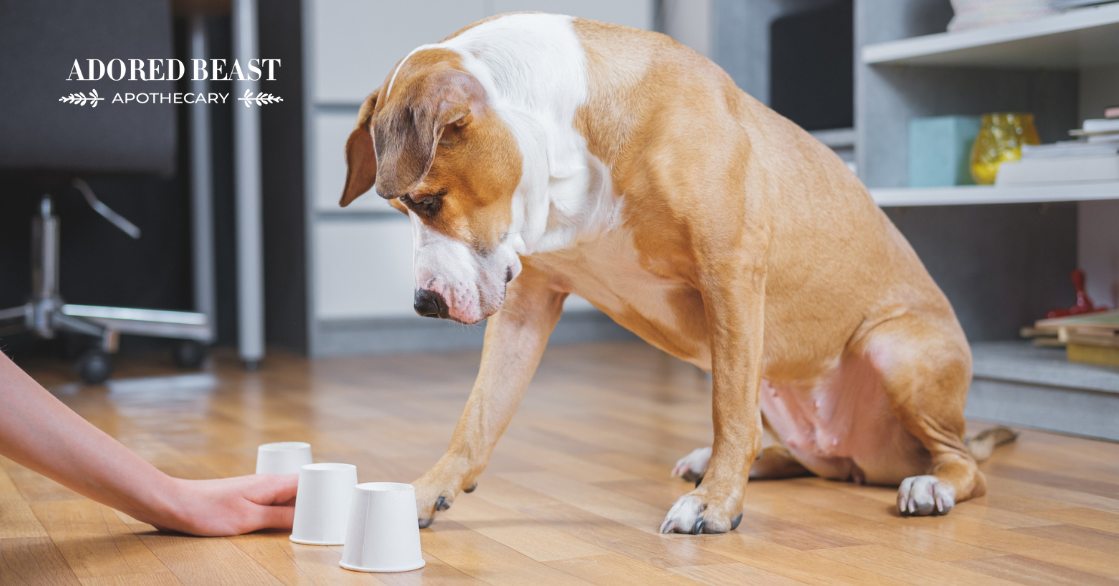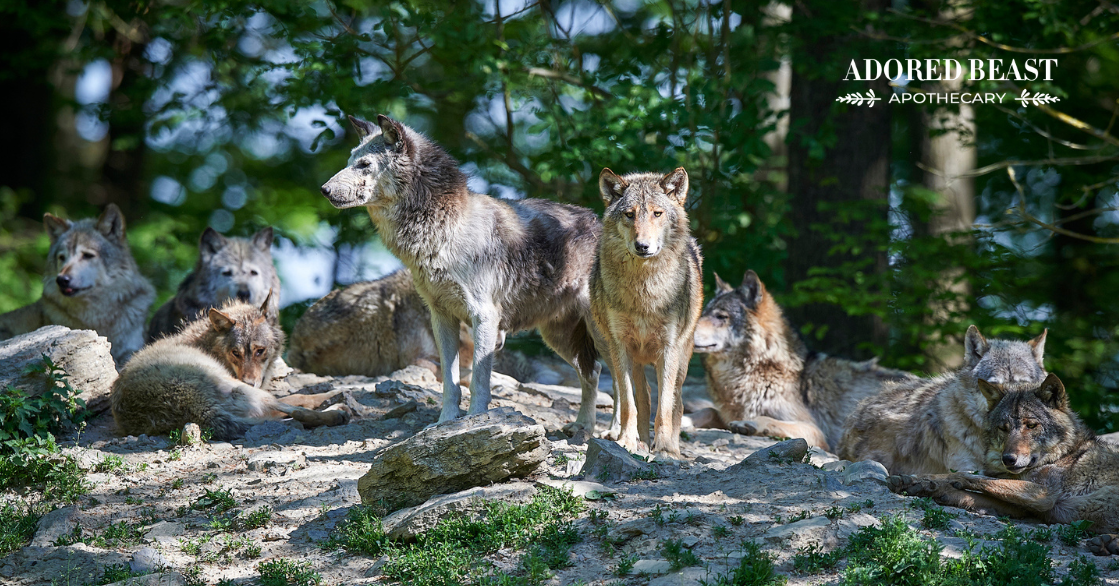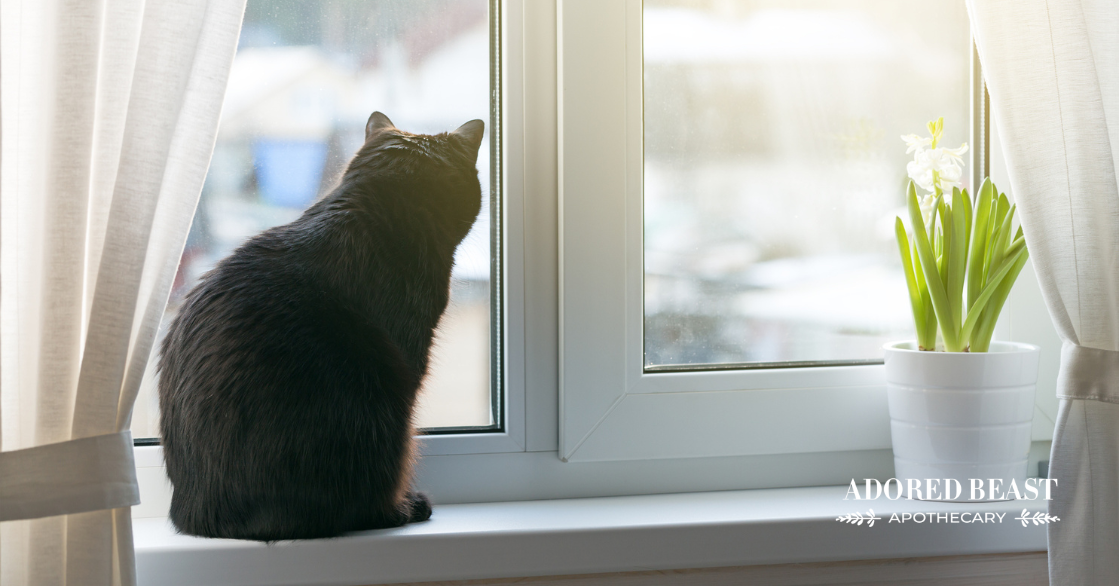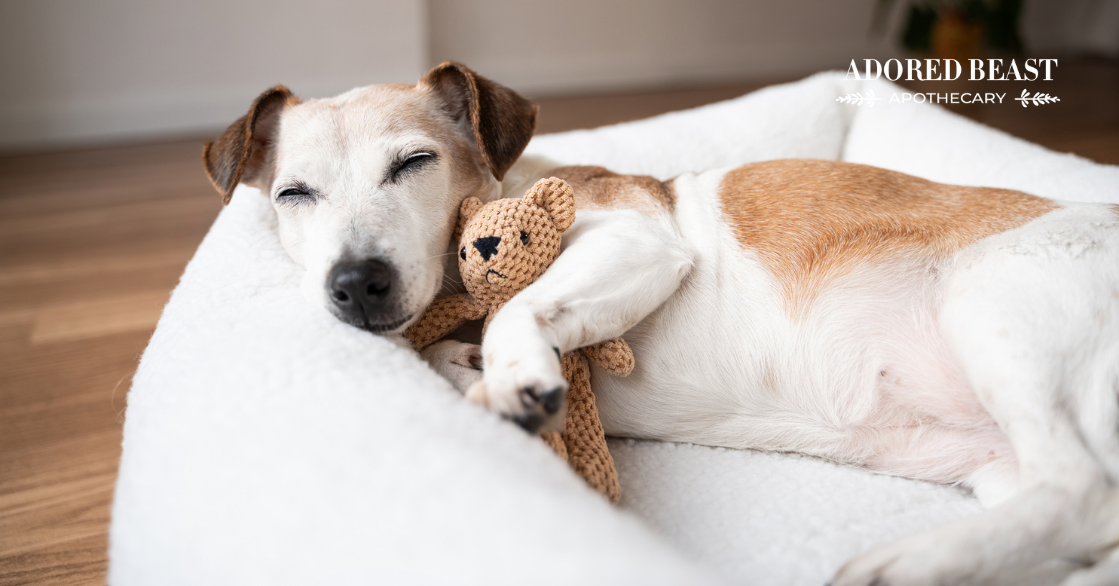This week it’s been really hot where we live – more like peak of summer weather than back to school weather.
Our dogs are feeling the heat. It’s too warm for more than a very short walk in the early morning or after the sun goes down. But while the warm weather zaps their usually boundless energy during the day, they still want to work their brains.
We have several brain games for dogs that we rotate through on days like these. They’re low impact physically, but the short stints of mental focus and activity really tire them out!
So, let’s open up the box of fun!
The Benefits of Mental Stimulation
There are several significant benefits to giving your dog’s brain a workout. While it’s important to make sure your dog gets enough physical activity each day, it’s equally important that they get enough mental exercise too.
In fact, a mental workout can tire your dog out more than a physical one. Research shows that mental stimulation is helpful for:
- decreasing hyperactivity
- reducing stress and boredom
- decreasing stereotypic and abnormal behaviours
- increasing relaxation
- exercising brain muscles, improving cognition and memory
- reducing barking or vocalisations
Health-wise, it helps to keep the mind sharp, which can keep it healthy. It can even help to discourage the development of conditions such as cognitive canine disfunction (AKA doggie dementia).
And brain games for dogs are an easy way to provide that mental stimulation.
Whether you need something to supplement your active dog’s physical exercise regimen, for a rainy day, or for when it’s too hot or too cold to walk, a few minutes of these activities can have a really meaningful impact!
**The goal of mental exercise is to engage your dog. Too much of it can have the opposite effect and cause your dog to become bored or frustrated with the activities. Start with just 2-5 minutes so you don’t overwhelm them. Work up from there, but even 5-10 minutes can be enough. Let your dog tell you when they’re finished. If they get frustrated, or seem to lose interest, they’ve probably had enough.
[RELATED] Want to engage your cat’s brain? We have some tips to beat boredom right here!
Brain Games for Dogs
Some of these will work for your dog, some won’t. We’ve provided lots of options so you can pick from the list!
1. Hide and Seek
This is a favourite in our house, particularly with our shepherd. She lays on her bed, while I hide her favourite toy (currently her frisbee) in another room. Once it’s hidden, I’ll come out and say “Ok, find it” and off she runs. I switch it up, so sometimes it’s easy to find and other times she has to work for it. She manages to find it herself 99% of the time. Simple nose work will keep your dog mentally stimulated, and it’s a fun way to let them hone in on their natural sniffing and scavenging abilities.
You can also play this with people – get the kids involved! – or even with treats. Just remember, if you use treats, count them and try to remember where you’ve hidden them all!
2. The Cup Game
This is a canine version of the shell game! Take a few cups or containers (we use plastic so there’s no chance of breaking), and put them down in front of your dog. Lift up one cup, place a high-value treat underneath, then cover it. Now slowly move them around and ask your pup to find the treat. This can take some practice, but it takes focus, which means the brain is working out!
3. Treats for Tricks
Can’t teach an old dog new tricks? Who told you that! Grab a handful of healthy treats your dog loves, and teach your pup something new. The trick could be something simple, like shake a paw, something with a little more finesse, like a twirl, or something a bit more complicated, like a figure eight around your legs. Cater the session to your dog’s abilities.
We taught Indi how to open the fridge… now if only she would close it after.
4. Dog Puzzles
There are many different puzzles you can buy online that encourage your dog to think for a reward. Many of these have sections that dogs need to move with their noses, slide with their paws, or pull out with their teeth. Inside they’ll find a treat! We have a few different dog puzzles at home, and they can be another good way to boost that brain power. If you’re really handy and creative, you can also make your own!
5. The Name Game
This one is really good for dogs that love their toys. And it’s really easy if your dog already knows the names of specific toys.
Start with 3 toys if this is new (you can increase the number over time as your dog becomes more familiar with the game). Lay out the toys in a line on the floor, and point to each one, telling your dog the name of the toy. Then, shuffle them up and ask them to touch/bring/get the toy you’ve named. Again, this one can take some practice, but practice is a big part of the mental stimulation.
6. Simple Agility
Here we’re not talking about setting up a full agility course in the house, but a few easy obstacles that your dog needs to navigate can give the brain some great exercise. Ideas include a hula hoop they can jump through, a solid block they can stand on, or something to jump over. Make sure you do this game in an area with enough space.
There are actually tons of easy, simple agility-type exercises you can do with dogs that double as physical therapy – do some research to find these! There are lots online. These help to build and work out the muscles and build your dog’s confidence!
7. Media
This is not technically a game, but it can help stimulate your dog’s brain…
Dogs can benefit hugely from listening to psycho-acoustic canine music which has been specially designed to promote particular physiological responses. Canine music is usually aimed at reducing anxiety, but can also be a valuable tool in providing appropriate stimulation at certain times. Television can also be beneficial. Turn on a soothing nature channel or find DogTV and let your pet watch. (This can also be helpful to leave on – both TV or music – when you leave the house.)
Brain games for dogs are immensely valuable. By providing your pup with both physical and mental exercise, you’re allowing them to engage their senses on different levels, and to keep different systems of the body fit and functioning. Physical exercise is essential – these can’t replace that – but they are an important part of creating a happy, healthy, engaging environment for your beloved beast. Have fun!












